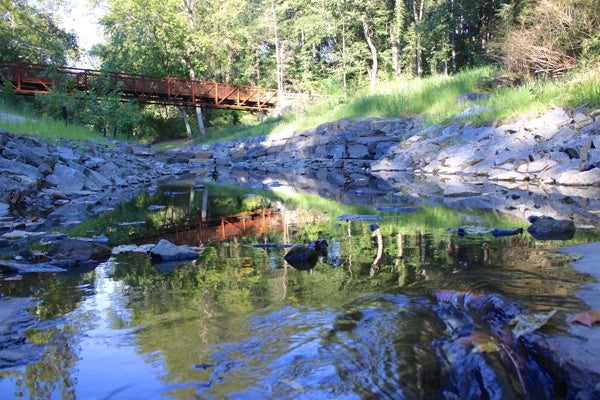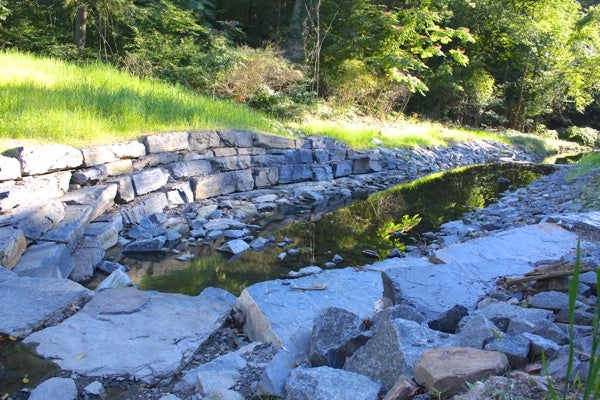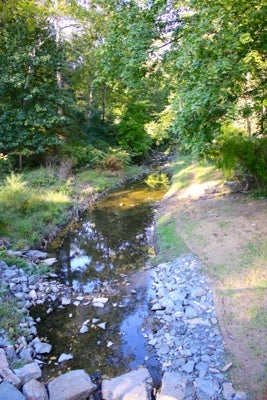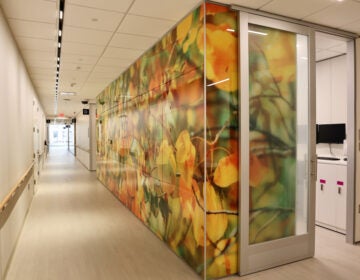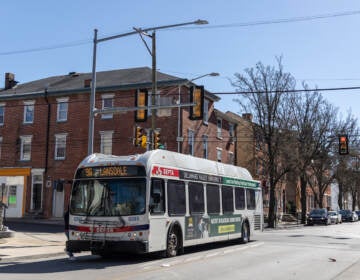How water flows through this creek matters to the Delaware River
A recent report on the health of the Delaware River showed that the water is the cleanest it has been since before the Industrial Revolution. But the same report from the Partnership for the Delaware Estuary warns that global climate change could create future challenges.
In an effort to ensure that the water quality improves, the Partnership is supporting several new projects that will make a difference to the Delaware River. One of those, being considered by the Philadelphia Water Department, would remove a small dam in Cresheim Creek in Northwest Philadelphia. Cresheim Creek drains into the Wissahickon Creek in Fairmount Park and eventually into the Delaware River.
Cresheim Dam is a rock structure that allows stream flow to pass through the middle of the dam. It has become an obstruction for fish and has led to a build-up of sedimentation upstream. The dam is upstream from where McCallum Street crosses over it in Mt. Airy.
“That impounded sediment … disrupts habitat quality and water quality and can even alter the channel morphology [the shape and structure],” said Gerald Bright, an environmental program specialist for the PWD. .
Bright also says the dam has created several pools of water that have contributed to the environmental degradation of the area.
“In a natural stream you have some areas that are shallow and deep,” Bright said. “Homogenous areas are not the best for habitat quality.”
Once the dam is gone, fish will be able to pass through the area and stop sediment from pooling upstream.
The hope of all parties involved is that the benefits of this project will literally trickle downstream to the Wissahickon Creek, the Schuylkill River, the Delaware River, and ultimately the Delaware Bay.
Jennifer Adkins, executive director of Partnership for the Delaware Estuary, says this is just one example of the many projects it would like to see. “This project is an excellent demonstration of the kind of work needed on many smaller streams in our watershed.”
The project is currently in the design phase with a hopeful start date of Summer, 2014.
WHYY is your source for fact-based, in-depth journalism and information. As a nonprofit organization, we rely on financial support from readers like you. Please give today.


